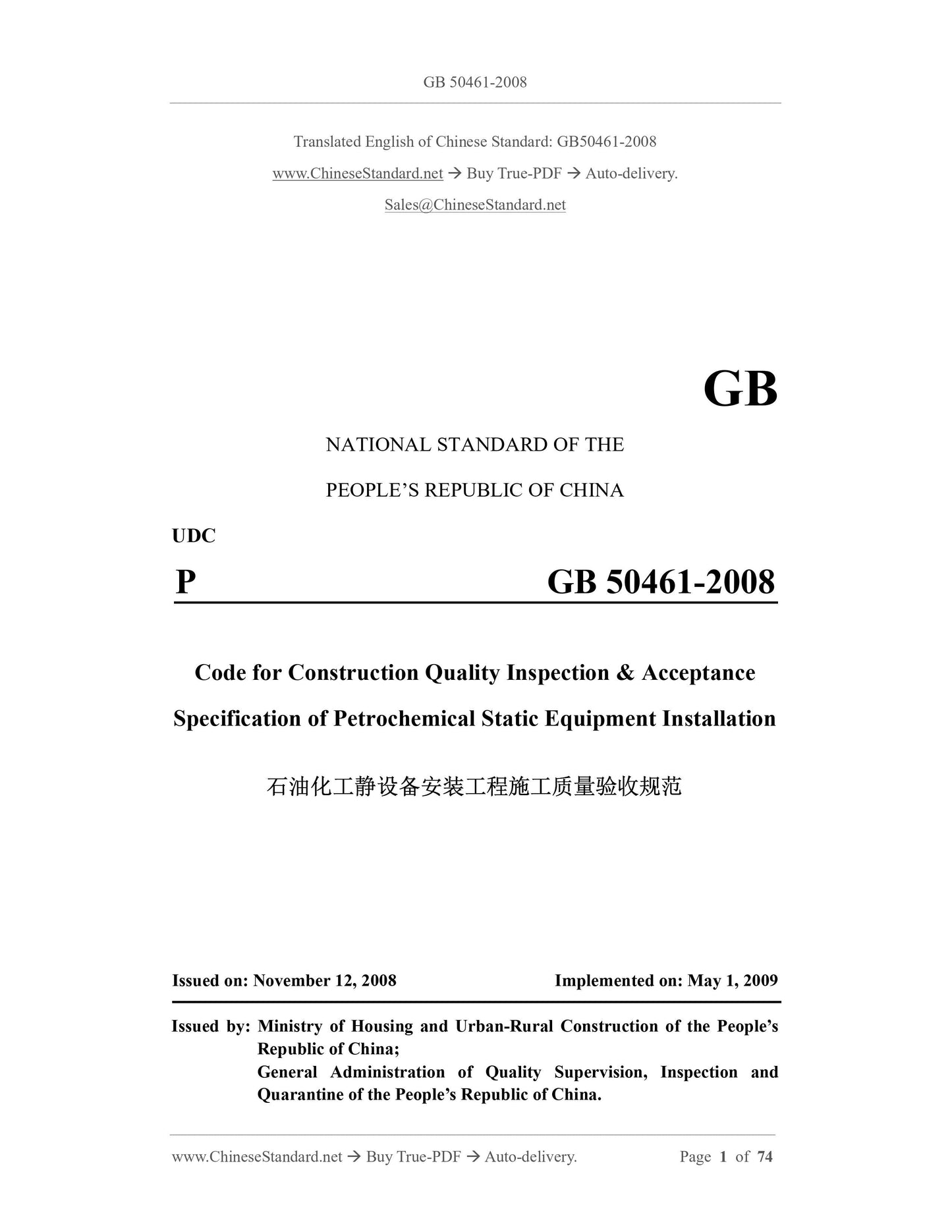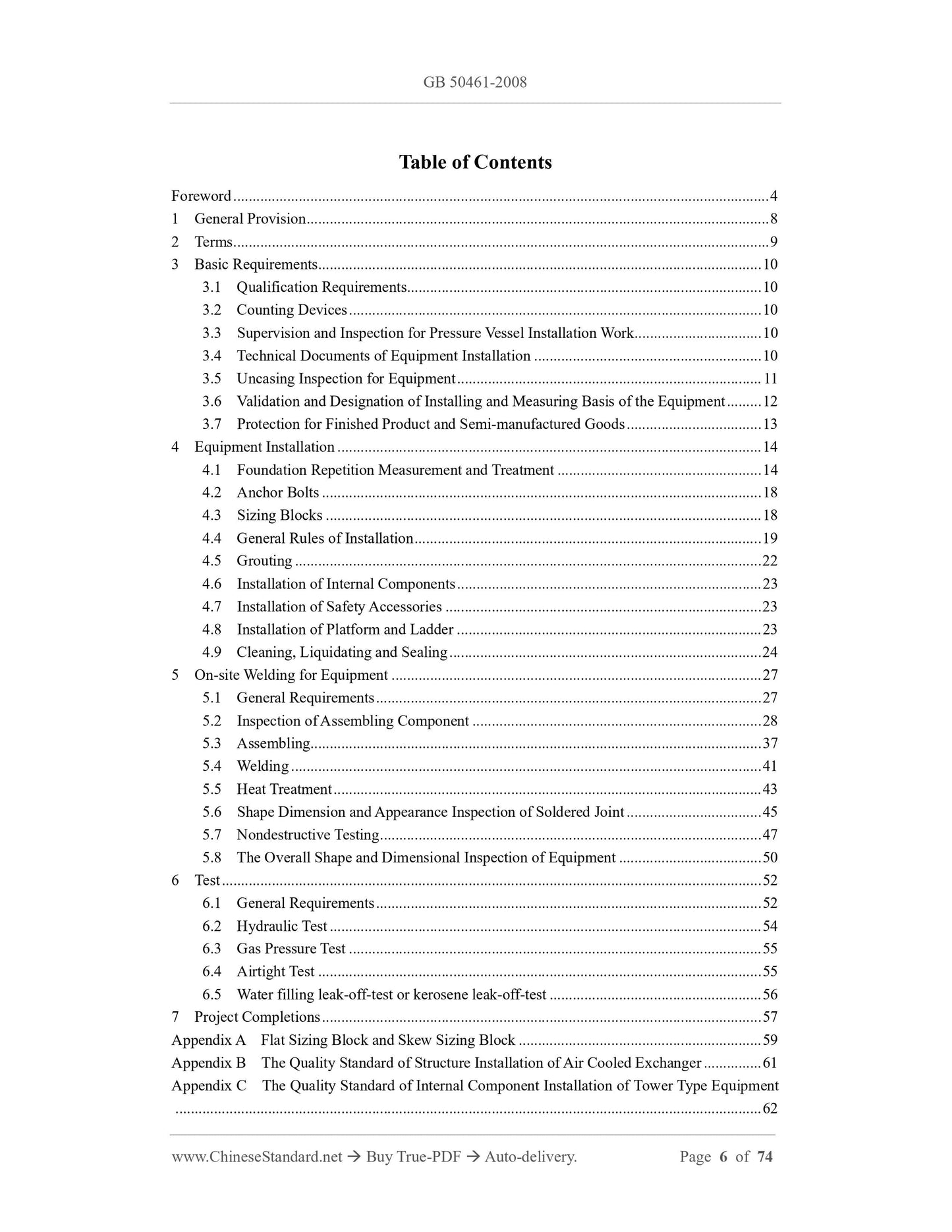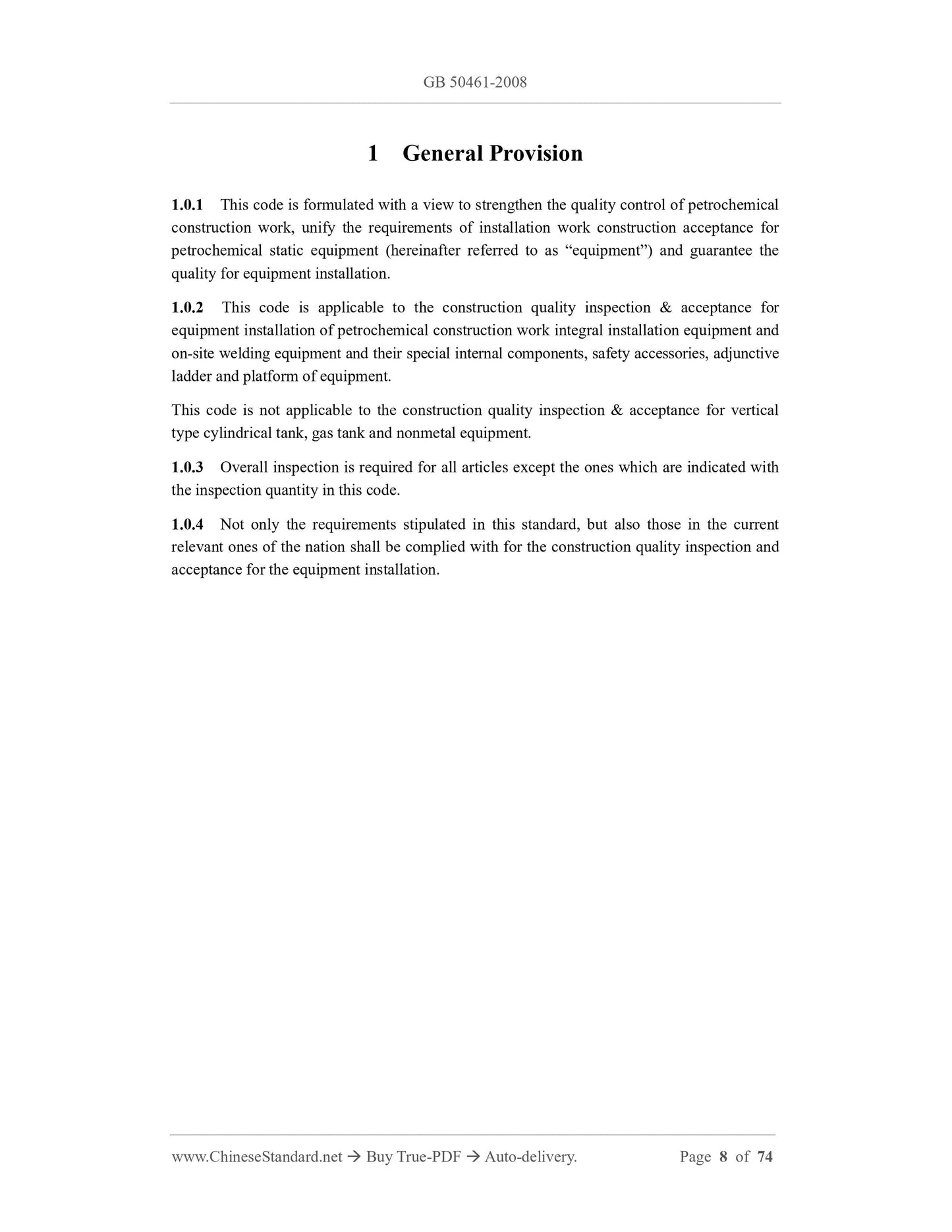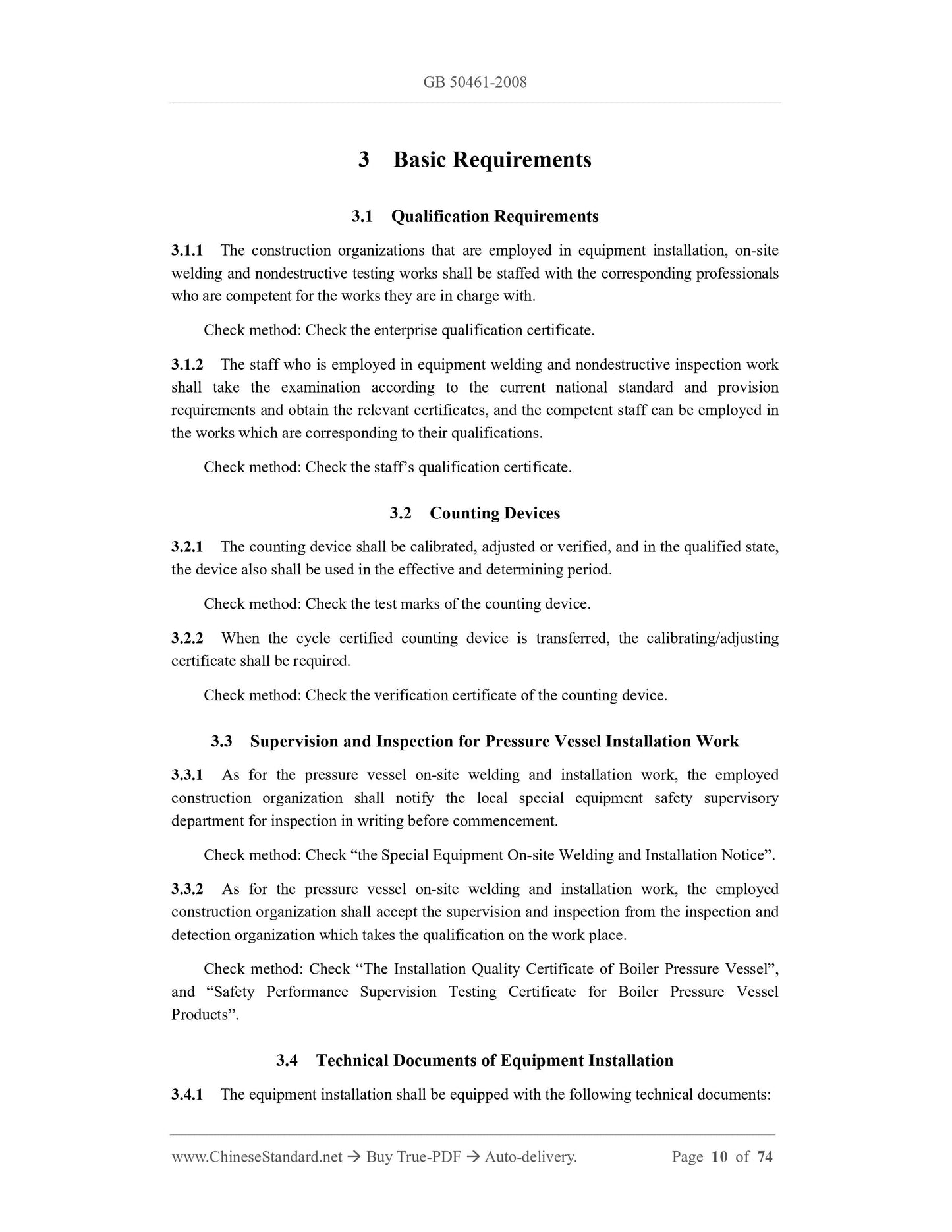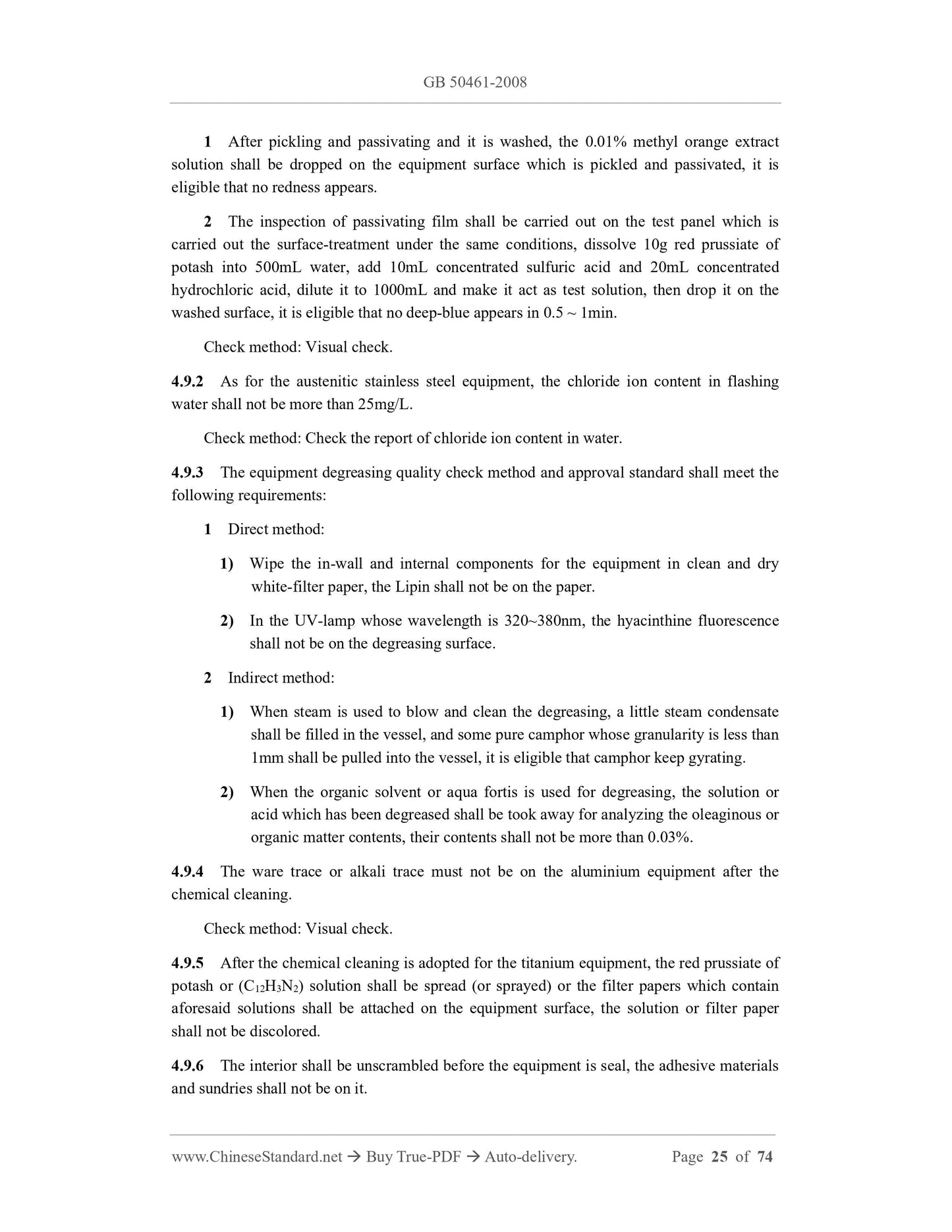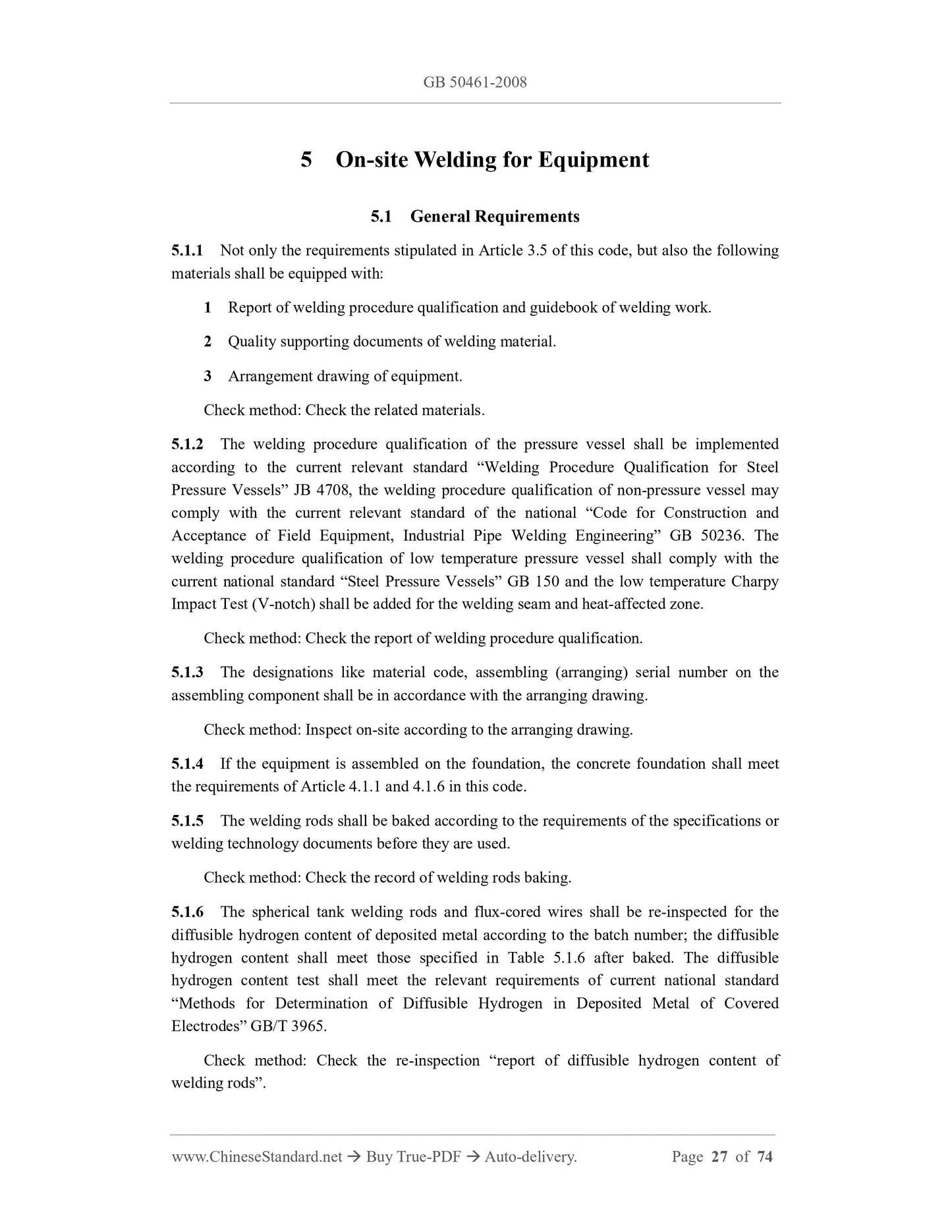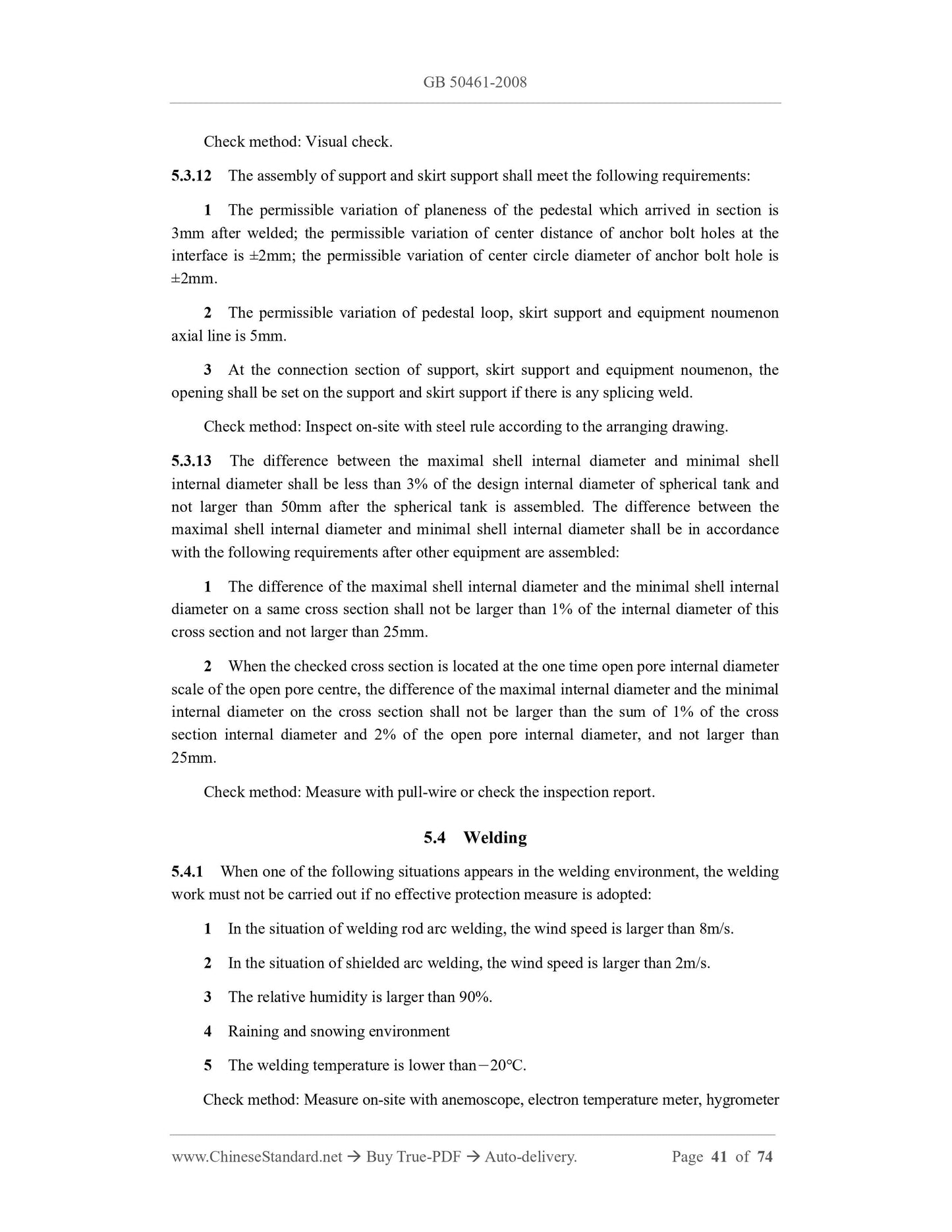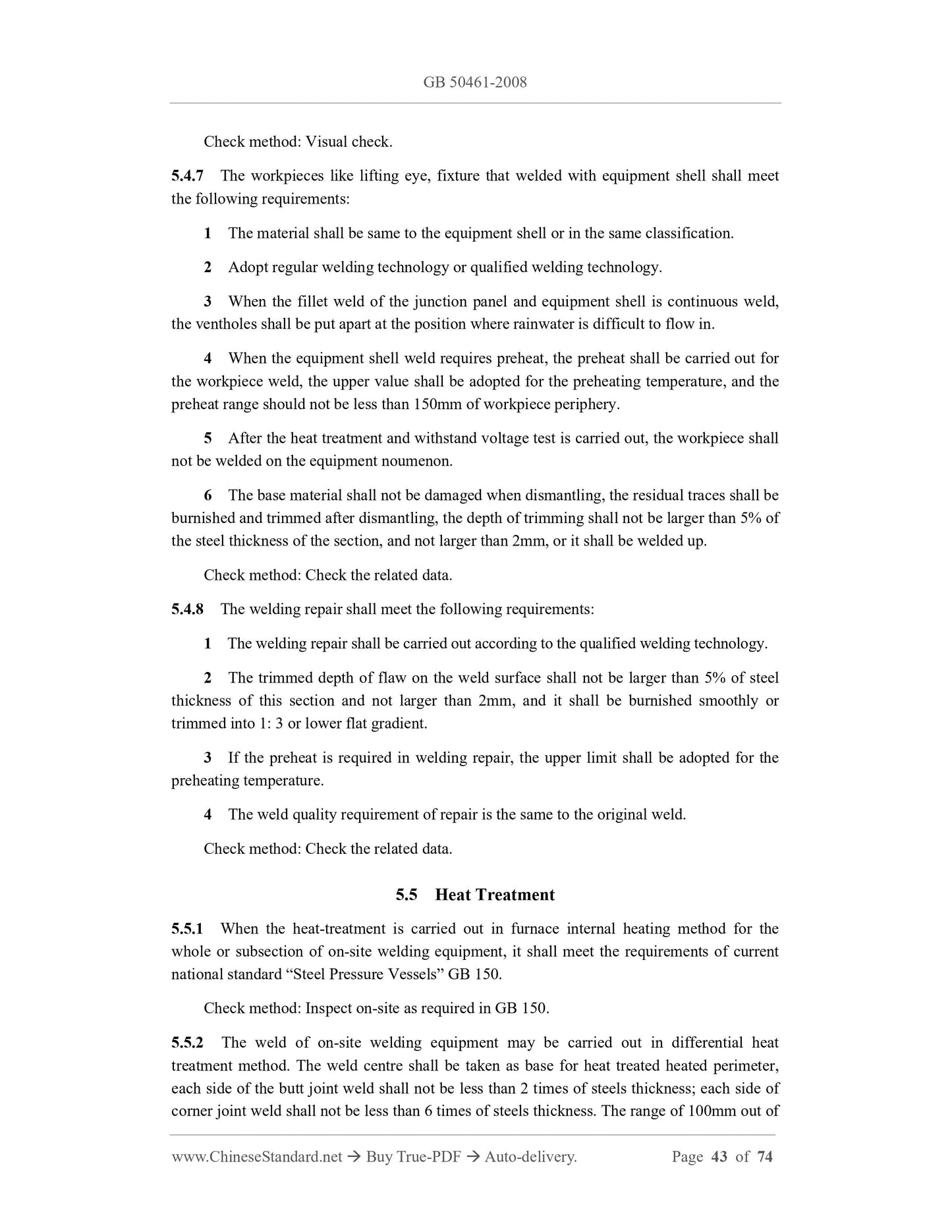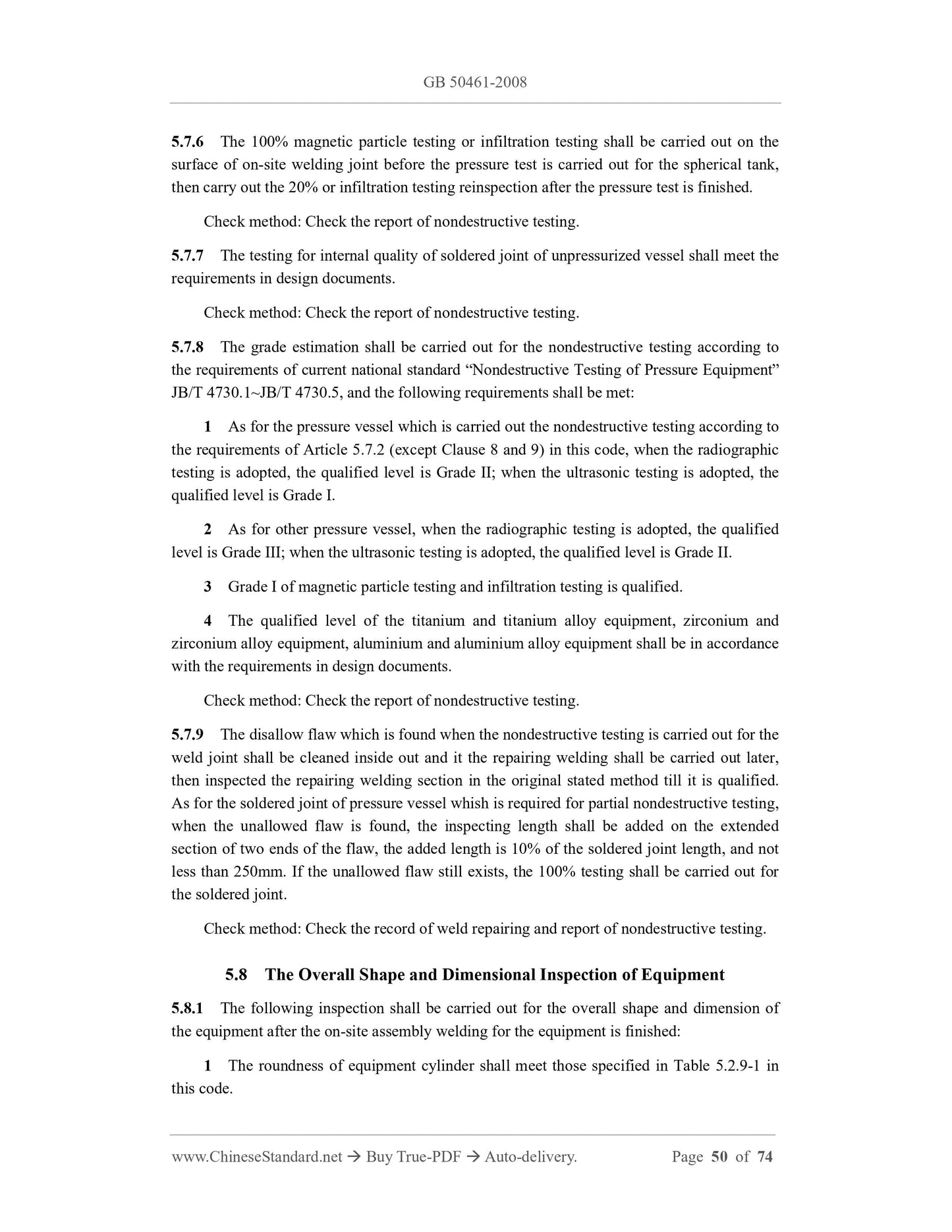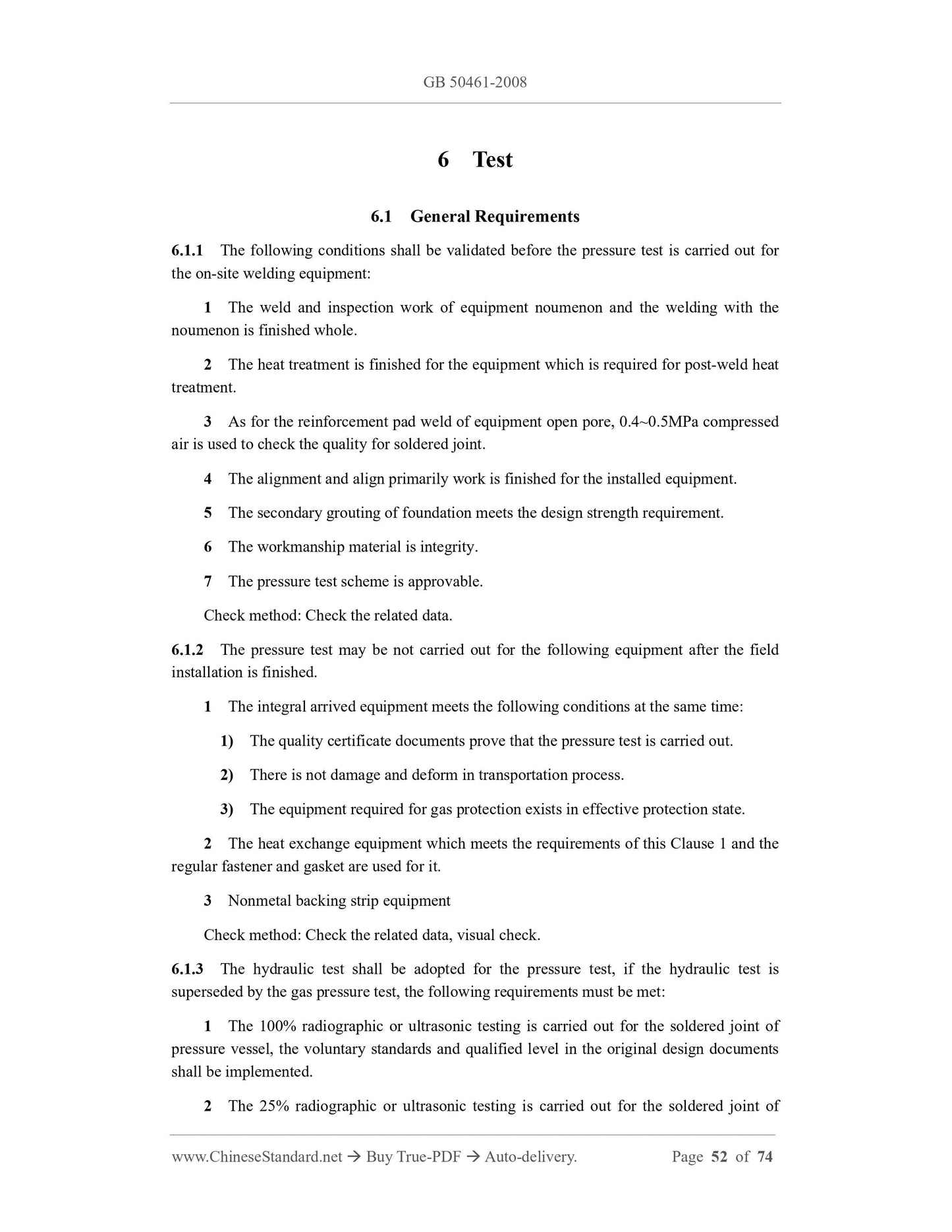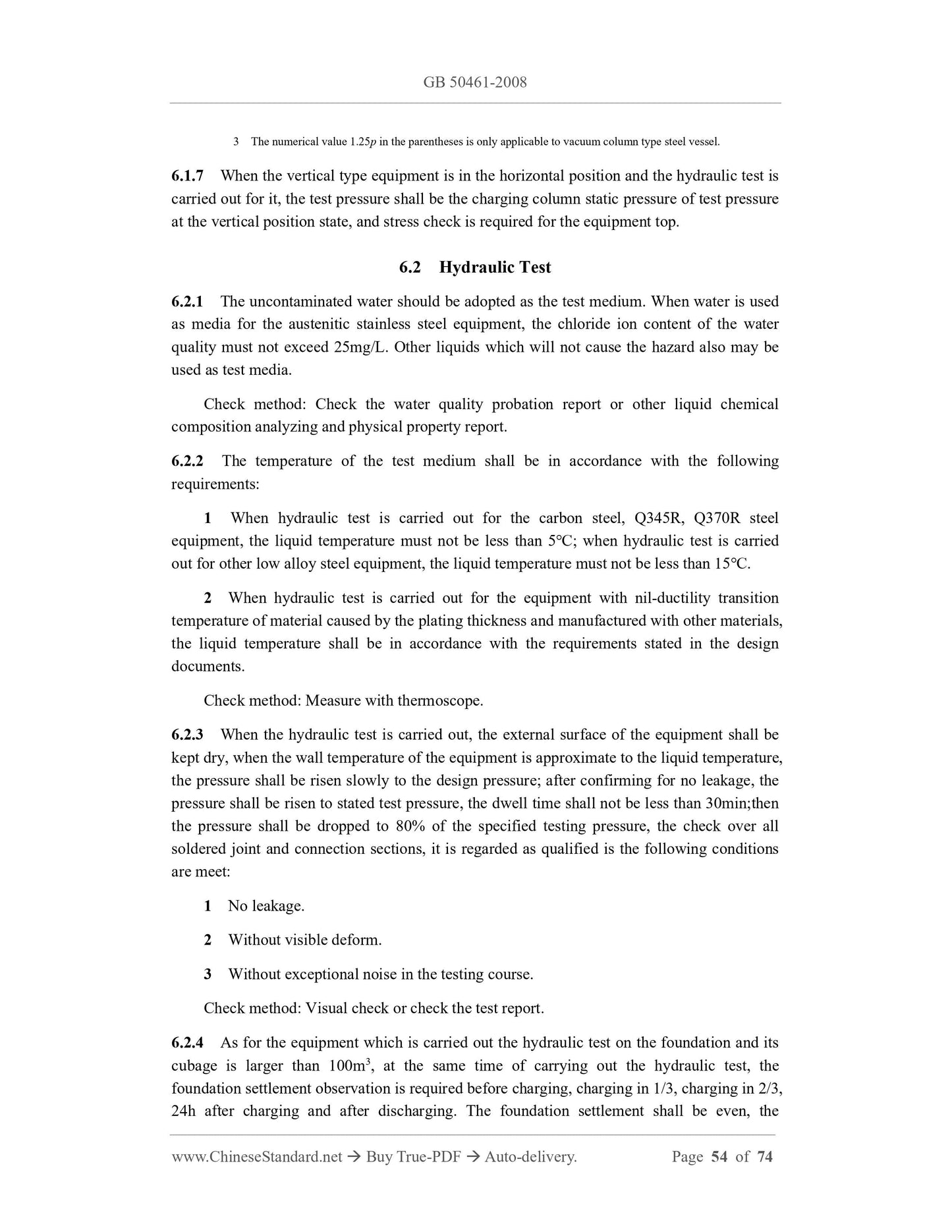1
/
of
12
www.ChineseStandard.us -- Field Test Asia Pte. Ltd.
GB 50461-2008 English PDF
GB 50461-2008 English PDF
Regular price
$505.00
Regular price
Sale price
$505.00
Unit price
/
per
Shipping calculated at checkout.
Couldn't load pickup availability
GB 50461-2008: Code for quality acceptance of static equipment installation in petrochemical engineering
Delivery: 9 seconds. Download (and Email) true-PDF + Invoice.Get Quotation: Click GB 50461-2008 (Self-service in 1-minute)
Newer / historical versions: GB 50461-2008
Preview True-PDF
Scope
1.0.1 This code is formulated with a view to strengthen the quality control of petrochemicalconstruction work, unify the requirements of installation work construction acceptance for
petrochemical static equipment (hereinafter referred to as “equipment”) and guarantee the
quality for equipment installation.
1.0.2 This code is applicable to the construction quality inspection and acceptance for
equipment installation of petrochemical construction work integral installation equipment and
on-site welding equipment and their special internal components, safety accessories, adjunctive
ladder and platform of equipment.
This code is not applicable to the construction quality inspection and acceptance for vertical
type cylindrical tank, gas tank and nonmetal equipment.
1.0.3 Overall inspection is required for all articles except the ones which are indicated with
the inspection quantity in this code.
1.0.4 Not only the requirements stipulated in this standard, but also those in the current
relevant ones of the nation shall be complied with for the construction quality inspection and
acceptance for the equipment installation.
Basic Data
| Standard ID | GB 50461-2008 (GB50461-2008) |
| Description (Translated English) | Code for quality acceptance of static equipment installation in petrochemical engineering |
| Sector / Industry | National Standard |
| Classification of Chinese Standard | P90 |
| Word Count Estimation | 87,834 |
| Date of Issue | 2008-11-12 |
| Date of Implementation | 2009-05-01 |
| Regulation (derived from) | Bulletin of the Ministry of Housing and Urban No. 163 |
| Issuing agency(ies) | Ministry of Housing and Urban-Rural Development of the People's Republic of China; General Administration of Quality Supervision, Inspection and Quarantine of the People's Republic of China |
| Summary | This Chinese standard applies to the whole petrochemical installation of equipment and construction site welding equipment and specially designed inner parts, safety accessories, equipment attached ladders, platforms, etc. for construction quality acceptance. This standard does not apply to vertical cylindrical tanks, gas cabinets and non-metallic construction quality inspection equipment. Unless otherwise indicated, the terms of this standard check number, shall be fully checked. Equipment installation construction quality inspection shall comply with the specifications and design documents, there should be consistent with existing national standards. |
Share
